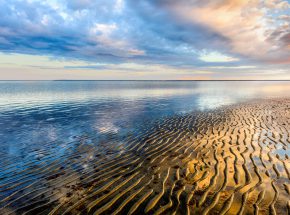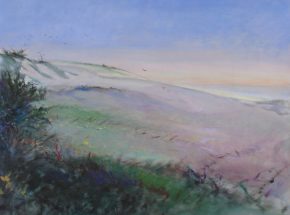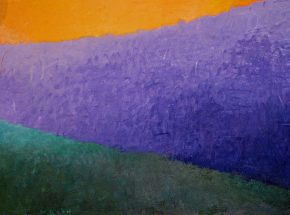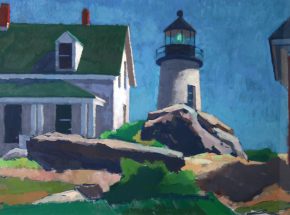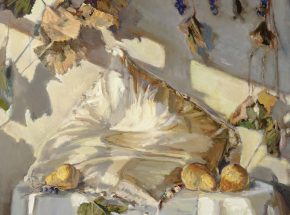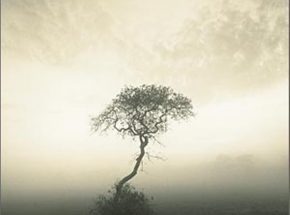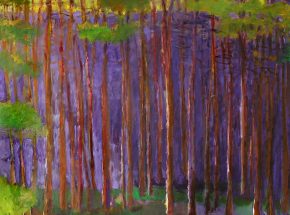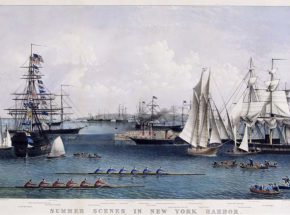
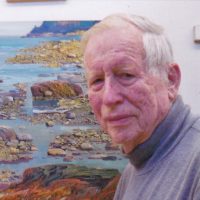
Born in Boston, Massachusetts, Laurence Philip Sisson was known for his figural depictions and scenes of the Maine coast and the Southwest. His style ranged from plein air watercolors to large oil paintings with abstract and surrealist elements.
Already a talented painter as a child, Sisson studied at the Yale Summer School in New Haven, Connecticut, and attended classes at the Worcester Art Museum in Massachusetts. He painted professionally in his twenties, although he had not yet decided to devote his life to art. While serving in the military during the United States occupation of Japan after World War II, he was commissioned to decorate the general’s residence in Yokohama. This assignment allowed him to learn and gain a renewed perspective about the Japanese environment and culture. Sisson describes this period of his painting as when he began “designing nature.” His artwork can be interpreted as a response to traditional Asian landscape painting, his Northern sensibility, and Western art training. While his landscapes of Maine and the Southwest were inspired by real locations, they were drawn from his imagination and memory. For the last forty-five years, Sisson lived in both areas of the United States, but noted that the most influential place for his artistic development was Japan.
Once the youngest member of the prestigious American Watercolor Society, Sisson participated in numerous solo and group exhibitions throughout the United States. His work can be found in the collections of Bowdoin College, Brunswick, Maine; the Boston Museum of Fine Arts, Massachusetts; and the New Britain Museum, Connecticut, among many others.
